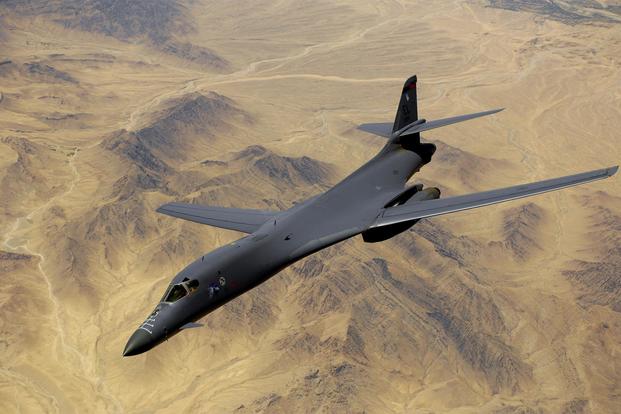The U.S. Air Force no longer wants to kick the can down the road on aging aircraft that may not be suitable for a fight against a near-peer adversary such as China or Russia.
More resources should be spent on state-of-the-art programs instead of sustaining old weapons and aircraft, multiple service officials said Wednesday during the 2019 Defense News Conference.
"We have to divest some of the old to get to the new," Lt. Gen. Timothy Fay, deputy chief of staff for strategy, integration and requirements, told audiences during a panel on Air Force program prioritization.
Fay said the service is prioritizing four major areas that its aircraft fleets will need to meet: multi-domain command and control, space, generated combat power, and logistics under attack.
Related: European Nations Are Teaming Up to Make a 6th-Gen Fighter. Can the US Keep Up?
As the Air Force drafts its upcoming budget request, it will keep those focuses in mind, he said. "We think those four areas move the needle," he explained.
Earlier in the conference, Acting Air Force Secretary Matt Donovan said Defense Secretary Mark Esper has been open to "divesting of legacy capabilities that simply aren't suited" for future battlefields.
"His guidance states that, 'No reform is too small, too bold or too controversial to be considered,'" Donovan said. "The Air Force is leading the way with bold, and likely controversial, changes to our future budget. We need to shift funding and allegiance from legacy programs we can no longer afford due to their incompatibility with the future battlefields and [instead] into the capabilities and systems ... required for victory. There's no way around it."
Following Donovan's remarks, aviation geek enthusiasts posting on social media wondered: Does that mean getting rid of the A-10 Thunderbolt II attack aircraft?
"Short answer, no," Fay said.
The beloved ground-support Warthog has had its ups and downs in recent years: The conversation to retire the aircraft began in 2014 by top brass who said the Warthog might not be survivable in a future fight. But in 2016, then-Defense Secretary Ash Carter announced that the A-10's retirement would be delayed until 2022 after lawmakers complained that eliminating it would deprive the military of a "valuable and effective" close-air-support aircraft.
More congressional pushback followed to keep the A-10 flying for as long as possible. Last month, Boeing Co. won a $999 million contract to re-wing up to 112 new A-10 wing assemblies and provide up to 15 wing kits.
That doesn't mean sustaining older platforms isn't taking a toll on the Air Force, Dr. Will Roper, assistant secretary of the Air Force for acquisition, technology and logistics, said Wednesday.
"It's been shocking to me how much hard work the Air Force puts into sustainment programs," he said during the Air Force panel. "A lot of our programs are in sustainment long past the original design life … and we're having to do Herculean tasks to keep airplanes flying that should have been retired a long time ago."
If the Air Force continues to keep less-than-capable fleets that won't survive a contested environment, it will not have adequate resources to devote to new programs, he said.
"They need to have an expiration date. … We want to be a cutting-edge Air Force working on the pediatric side of the hospital, not the geriatric side," Roper said.
The Air Force has been pouring money into more than one overtasked aircraft fleet in recent years.
The B-1B Lancer fleet, for example, has been undergoing extensive maintenance for the past few months after the service overcommitted its only supersonic heavy payload bomber to operations in the Middle East over the last decade. The repeated deployments caused the aircraft to deteriorate more quickly than expected, Gen. Tim Ray, head of Air Force Global Strike Command (AFGSC), said in the spring.
"Normally, you would commit -- [with] any bomber or any modern combat aircraft -- about 40 percent of the airplanes in your possession as a force, [not including those] in depot," he explained April 17. "We were probably approaching the 65 to 70 percent commit rate [for] well over a decade."
The B-1's mission-capable rate -- the ability to conduct operations at any given time -- is 51.75%, according to fiscal 2018 estimates, Air Force Times recently reported. By comparison, its bomber cousins, the B-2 Spirit and B-52 Stratofortress, have mission-capable rates of 60.7% and 69.3%, respectively.
As of August, there were only seven fully mission-capable B-1 bombers ready to deploy, AFGSC said.
The Air Force has managed to kill some aircraft programs despite congressional pushback.
Through the fiscal 2019 defense budget, the service officially put to bed the E-8C Joint Surveillance Target Attack Radar System recapitalization effort, convincing lawmakers to think beyond a single-platform program in favor of an elite system that will fuse intelligence, surveillance and reconnaissance sensor data from around the world.
As a result, the 2019 National Defense Authorization Act granted additional funding for the next-generation system, known as the Advanced Battle Management System, in lieu of a new JSTARS fleet.
-- Oriana Pawlyk can be reached at oriana.pawlyk@military.com. Follow her on Twitter at @Oriana0214.
Read more: Air Force Evacuates Dozens of Aircraft as Hurricane Dorian Nears












